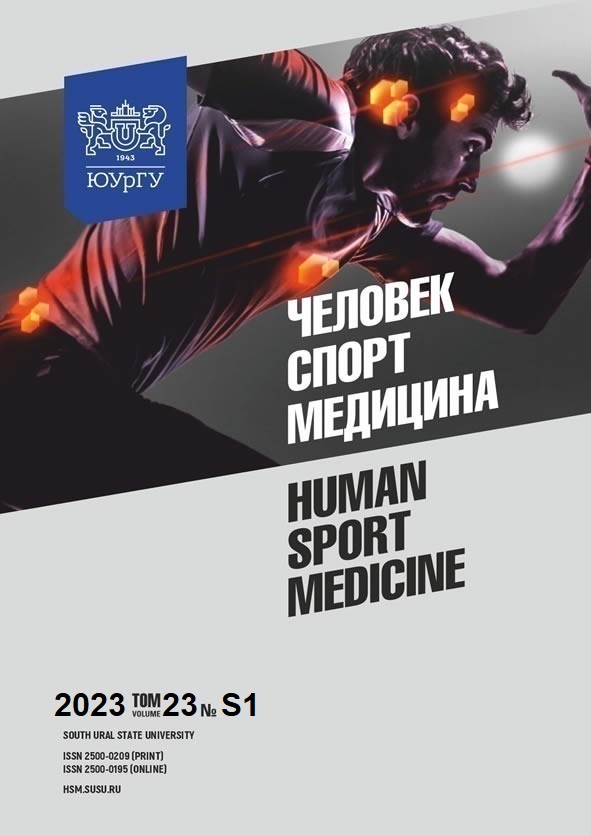RED BLOOD CELLS IN CROSS-COUNTRY SKIERS DURING THE EARLY SEASON
Abstract
Aim. The paper was aimed at evaluating the red blood cell (RBC) profile in cross-country skiers during the early season and depending on their physical performance. Materials and methods. The study took place at the Institute of Sport, Tourism and Service (South Ural State University, Chelyabinsk, Russia). The study involved male cross-country skiers. Prior to the study, all athletes provided their informed consent for participation in it. Following the assessment of physical performance, all athletes were divided into 2 groups: leaders (n = 10) and reserve athletes (n = 10). The levels of RBC (1012/l), hemoglobin (HGB, g/l), hematocrit (HCT, %), and erythrocyte sedimentation rate (ESR, mm/h) were used to assess adaptive changes in blood and their effectiveness. Blood measurements were obtained with the Sysmex XN-1000 hematology analyzer (Sysmex, Japan). Results. The comparative analysis of RBC and HGB levels in leaders and reserve athletes did not show differences during the early season, regardless of its stage. In leaders, by the end of the basic stage, a decrease of HCT levels was recorded (p = 0.043) followed by level stabilization. In reserve athletes, a consistent increase in HCT levels was recorded, which amounted to 16.15% by the end of the early season (p = 0.001). At the same time, reserve athletes demonstrated increased ESR by the end of the early season. Conclusion. The investigation of the RBC profile in athletes with different levels of physical performance contributes to a better understanding of personal adaptive mechanisms and further athletic performance enhancement.
References
References on translit
Copyright (c) 2023 Human. Sport. Medicine

This work is licensed under a Creative Commons Attribution-NonCommercial-NoDerivatives 4.0 International License.















